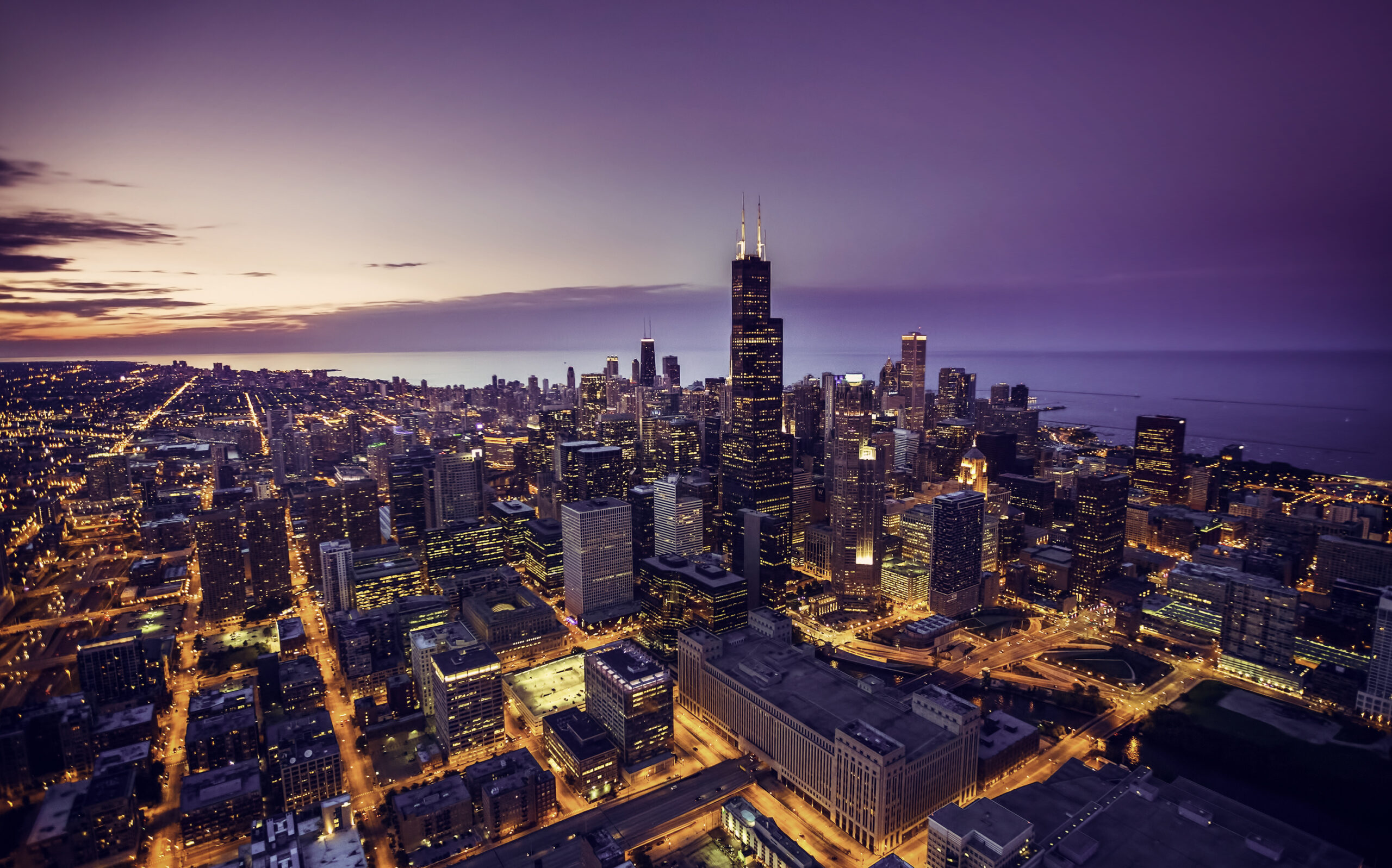Road Traffic Safety in Chicago

As the nation’s third-most populous city, Chicago has a lot of traffic congestion. Unfortunately, crowded roads lead to car accidents that can severely injure or kill motor vehicle drivers and passengers, pedestrians, and bicyclists.
On the other hand, according to data from the City of Chicago, the number of car accidents has slowly declined since peaking in 2019. And many accidents only produce property damage due to the low speeds of the vehicles.
If you will be traveling the Windy City’s roads, it is essential to learn when and where car accidents in Chicago tend to happen and how you can navigate this city safely.
Chicago Traffic Accident Statistics
When you run a query on the Chicago Data Portal, you will find that the city had 108,083 total traffic accidents in 2022. This number includes 2,698 pedestrian accidents and 1,717 bicycle accidents. Based on these numbers, about 37% of traffic crashes in Illinois occur in Chicago.
Chicago’s traffic accident statistics also point to the common reasons and locations these crashes happen.
When Chicago Traffic Crashes Happen
According to the Chicago Traffic Crashes Dashboard, more accidents happened on Fridays than on any other day of the week. In fact, Fridays and Saturdays are the most dangerous days to drive in Chicago, while Sunday is the safest. The difference in crashes is significant; almost 33% more crashes happened on Fridays than Sundays.
During the year, traffic accidents hit their lows in April before jumping in May. The number of accidents increases steadily through the summer and fall before peaking in October. Again, there is a stark difference between the high and low numbers, with October accounting for 38% more crashes than April.
The most dangerous time of day to drive is during the evening commute. Nearly 23% of traffic crashes in Chicago happen between 3 p.m. and 6 p.m., according to the Traffic Crashes Dashboard.
All of these trends make sense. Traffic congestion peaks during the summer when tourists head to Chicago and residents spend more time outdoors. Congestion also peaks during the afternoon commute. This congestion increases the interactions between vehicles, pedestrians, and cyclists, which, in turn, increases the crash risk.
And the peak on Fridays and Saturdays likely accounts for the increased risk of late-night driving from fatigued and intoxicated drivers.
Deaths and Injuries
Chicago had 198 fatal traffic accidents in 2022, according to the Chicago Data Portal. Another 15,892 traffic accidents caused non-fatal injuries. Overall, almost 15% of Chicago traffic accidents caused a fatal or non-fatal injury in 2022.
The city’s accidents injured or killed 22,085 people that year. This number includes:
- 158 fatalities
- 2,286 people with incapacitating injuries who required an ambulance
- 12,733 people with non-incapacitating injuries who could drive themselves from the accident scene
- 6,913 people who reported symptoms like pain or limited mobility but had no visible wounds
These injury numbers include motorists and passengers, as well as pedestrians and cyclists.
Causes of Traffic Accidents
According to the Chicago Data Portal, the most common causes of traffic crashes in Chicago in 2022 include:
Failing to Yield
A failure to yield the right of way was the most common cause of traffic crashes in Chicago in 2022. This happens when drivers:
- Proceed out of turn at an intersection
- Run stop signs or red lights
- Turn left across the path of an oncoming vehicle
- Turn right into the path of an oncoming vehicle
- Fail to slow down or stop at a yellow light or yield sign
These crashes can cause serious injuries because the vehicles strike each other at an angle or head-on.
Following Too Closely
Tailgating happens when a driver fails to follow another vehicle at a safe distance. This driver behavior leads to rear-end crashes. Rear-end collisions were the most common type of collision in 2022, according to the Chicago Data Portal.
Speeding
Speeding is another major contributing factor to Chicago car accidents. Speeding and traveling too fast for the road or weather conditions will increase the odds that a driver loses control of the vehicle during an emergency situation. These behaviors also decrease the time the driver has to avoid road or traffic hazards.
Distracted Driving
Chicago has a national reputation for distracted driving. According to one survey, Chicago was the worst city for distracted driving fatalities in the nation.
Vulnerable Road Users
Pedestrians and bicyclists account for only 1.9% of accident victims in Chicago traffic accidents. But these vulnerable road users suffer injuries and deaths at a much higher rate.
The Chicago Data Portal notes that over 70% of collisions between bicycles and vehicles result in an injury or fatality. The numbers are even worse for pedestrians. Nearly 88% of pedestrians suffer injury or death after being hit by a vehicle.
Dangerous Roads and Intersections
Most traffic accidents happen on roadways rather than at intersections. Undivided city streets, divided highways, and one-way streets are the three most common locations for traffic accidents in Chicago, according to the city’s Data Portal. Intersections land in fourth place among common traffic accident locations.
Some of the most dangerous roads in Chicago include:
- Roosevelt Road
- Wacker Drive
- Michigan Avenue
- Chicago Avenue
- Lake Shore Drive
Accidents often cluster on these roads due to heavy traffic and speed limits that are set too high.
Some of the most dangerous intersections in the city include:
- Columbus Drive and Wacker Drive
- Randolph Street and Dearborn Street
- Armitage Avenue and Sheffield Avenue
Crashes cluster at these intersections due to poor traffic control and traffic congestion.
Improving Chicago’s Road Safety
Chicago has a Vision Zero plan to improve road safety in the city. The idea behind Vision Zero is that everyone, including the city, has a role in preventing traffic injuries and deaths.
The primary initiative in the Vision Zero plan is to design safer streets. Chicago has already redesigned over 100 pedestrian crossings and altered the signs at 1,700 intersections. The city also has almost 150 miles of bikeways.
Navigating Chicago Safely
Road safety remains a primary concern in Chicago. Traffic congestion magnifies the problems of tailgating, distracted driving, and speeding.
But Chicago also has one of the most extensive public transportation networks and is working on expanding its bikeway network. By avoiding peak traffic times and looking for alternate forms of transportation, you can safely navigate the city and its surrounding areas.
